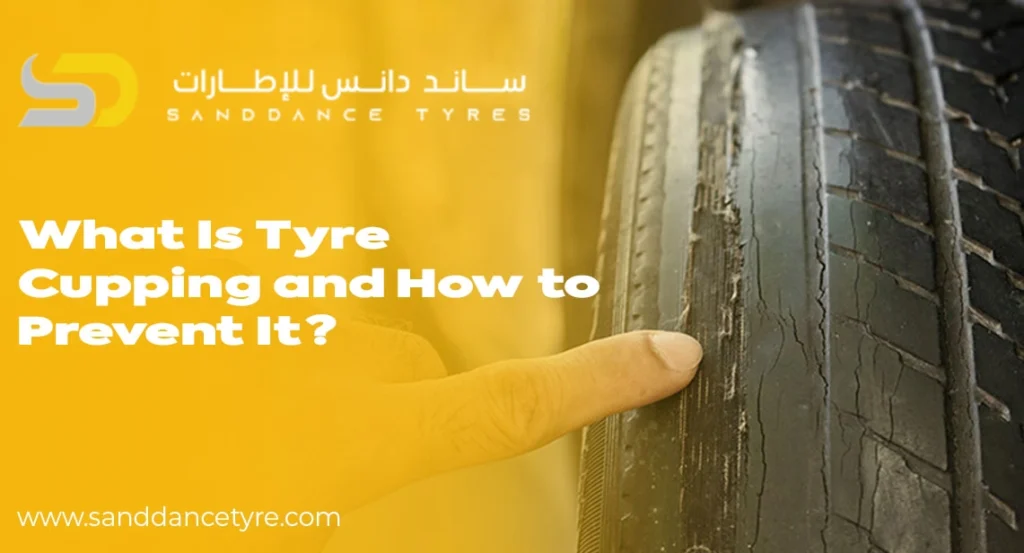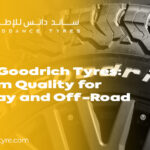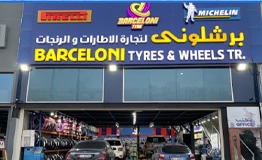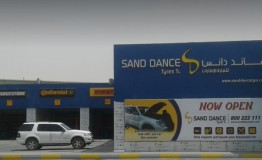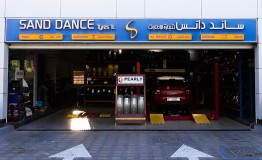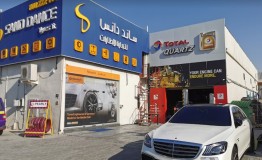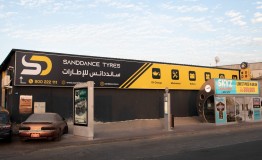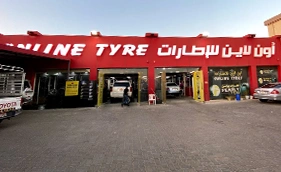When it comes to tyre conservation, utmost vehicle possessors are apprehensive of standard wear and tear and gash, similar as bald spots or sidewall damage. But one lower- known and frequently misknew issue is tyre cupping. Also appertained to as scalloping, tyre cupping is an abnormal tread wear and tear pattern that can compromise your driving comfort, safety, and tyre lifetime. At Sand Dance Tyres, we believe in keeping our guests informed so they can spot problems beforehand and take the right measures.
Tyre cupping is n’t just a ornamental issue. It can affect the overall performance of your auto and point toward more serious underpinning issues like shock absorber problems, wheel imbalance, or suspense wear and tear. Understanding what causes tyre cupping, how to identify it, and what you can do to help it can save you plutocrat and insure a safer drive.
Understanding Tyre Cupping
Tyre cupping occurs when corridor of the tyre tread wear down inversely, creating a surge- suchlike or scalloped pattern around the circumference of the tyre. rather of the tread wearing flat across the face, you get high and low spots that lead to uncomfortable climate, irregular traction, and loud road noise. numerous motorists first notice tyre cupping not visually but aloud — through the noisy tyres that sound like a low droning or growling at certain pets.
The main malefactor behind cupped tyres is irregular wear and tear caused by suspense or alignment problems. Unlike normal tread wear and tear, which happens gradationally and unevenly, cupping is rapid-fire and localized. This makes it particularly dangerous because the tyre can deteriorate faster than anticipated and lead to safety hazards like dropped traction and poor running.
Common Causes of Tyre Cupping
One of the leading causes of tyre cupping is shock absorber issues. Shock absorbers are designed to keep your tyres in harmonious contact with the road by absorbing the force of bumps, potholes, and uneven shells. When they fail or weaken over time, your tyres may start to bounce slightly while driving. This repeated up- and- down stir causes certain corridor of the tyre tread to hit the road harder than others, leading to the development of tread swells or scallops.
Another contributing factor is poor wheel alignment.However, the tyres may not sit rightly on the road face, leading to uneven pressure and irregular wear and tear, If your vehicle’s bus are deranged. Add in unstable tyres or worn-out suspense factors, and you have a perfect form for cupping.
At Sand Dance Tyres, we frequently see these symptoms in vehicles that have not experienced regular conservation. The UAE’s hot rainfall and variable road conditions can also accelerate these issues, especially if the tyres are not specifically designed for the region.
How to Identify Tyre Cupping
Cupped tyres frequently produce a humming or droning sound that gets louder with speed.However, it could be due to uneven tyre wear and tear, If your vehicle vibrates surprisingly or pulls slightly to one side. The stylish way to confirm cupping is through a physical examination. You may feel high and low spots as you run your hand along the tyre tread, or you may notice a crimpy pattern when you look nearly at the tyre.
While these symptoms might act other tyre issues, a professional examination is the stylish way to determine if cupping is the cause. Our platoon at Sand Dance Tyres can snappily identify cupping signs and advise on the stylish course of action, whether it involves tyre relief or fixing the underpinning suspense problem.
Noticed your auto’s lift is bumpier than usual? Visit Sand Dance Tyres for a free tyre scan and let our experts diagnose any retired cupping or alignment issues before they come serious.
Preventing Tyre Cupping
Prevention is always better than cure when it comes to tyre wear and tear. The most effective way to help tyre cupping is to stick to a regular conservation schedule that includes tyre gyration, wheel alignment, and suspense examination.
Tyres should be rotated every 8,000 to 10,000 kilometers to insure indeed wear. Regular wheel balancing and alignment can correct minor defects that might lead to tyre bouncing.However, have your shock absorbers checked incontinently, If your auto’s suspense feels soft or you’ve noticed increased brio after bumps.
Another key to forestallment is tyre quality. Investing in high- quality tyres from a trusted supplier like Sand Dance Tyres ensures you’re getting products erected with better accoutrements and advanced tread designs that minimize uneven wear and tear. Our range of decoration tyres includes models specifically finagled to repel cupping and perform well under UAE’s extreme road and rainfall conditions.
Do n’t stay until your tyres show visible damage. record your free tyre health check with Sand Dance Tyres and insure a safe, smooth, and cupping-free drive across the Emirates.
When to Replace Cupped Tyres
In some cases, mildly cupped tyres can be rescued through gyration and addressing the underpinning mechanical issue. still, if the damage is expansive, relief is generally the safest option. Driving on poorly cupped tyres reduces your retardation effectiveness, increases energy consumption, and may lead to unforeseen blowouts especially at trace pets.
At Sand Dance Tyres, we offer a wide selection of tyres with durable tread composites, precise balancing, and advanced tread patterns to help you avoid these issues in the future. Our staff can also help diagnose the root cause of the cupping, from shock absorber issues to suspense imbalances, giving you a complete result, not just a quick fix.
FAQs
Q1 What exactly is tyre cupping?
Tyre cupping is a form of irregular wear and tear that creates high and low spots on the tread, frequently due to bouncing or poor suspense performance.
Q2 What causes tyre cupping the most?
The most common cause is worn or failing shock absorbers, but poor alignment, unstable tyres, and suspense wear and tear can also contribute.
Q3 Can cupped tyres be fixed?
Mild cupping may be managed by rotating the tyres and fixing suspense issues, but in severe cases, the tyres generally need to be replaced.
Q4 Are cupped tyres dangerous?
Yes, they can lead to poor running, increased road noise, longer retarding distances, and indeed tyre blowouts in extreme cases.
Q5 How can I avoid tyre cupping in the future?
Regular tyre gyration, suspense checks, wheel alignment, and investing in quality tyres designed for your climate can help cupping.


